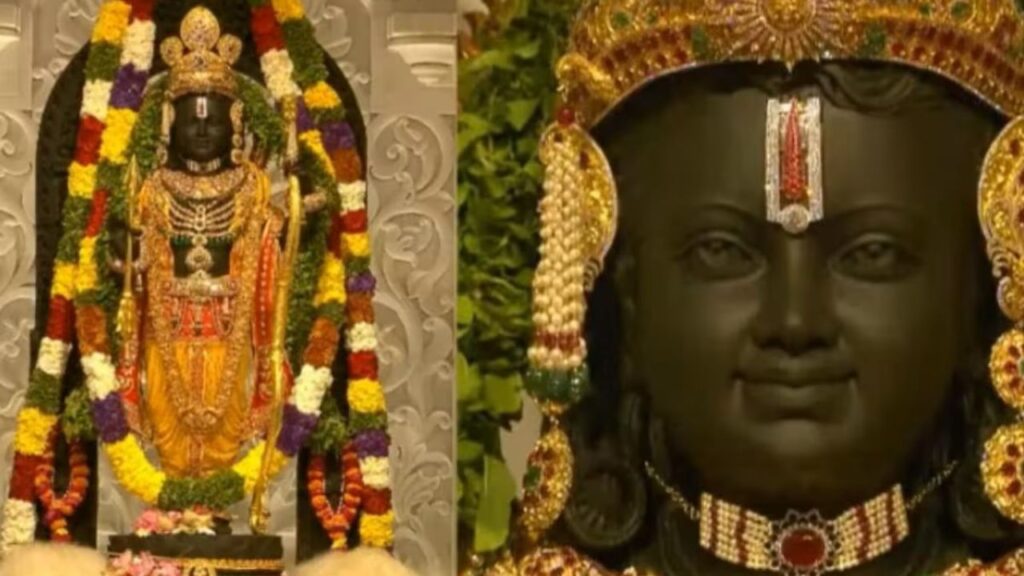Explore the awe-inspiring journey of Ramlalla’s statue, carved from 2.5 billion-year-old black granite. Discover the geological marvel behind this ancient idol at Ram Janmabhoomi Temple, showcasing enduring strength and timeless beauty.

In a remarkable fusion of ancient geology and religious symbolism, the recently unveiled idol of Ramlalla at the Ram Janmabhoomi Mandir in Ayodhya stands as a testament to the enduring strength of nature. Crafted from a unique black granite, estimated to be an astonishing 2.5 billion years old, the statue has garnered attention not only for its spiritual significance but also for the geological marvel it embodies.
The mastermind behind this exceptional creation is none other than renowned sculptor Arun Yogiraj, who painstakingly carved the 51-inch idol from special black granite sourced from Karnataka. Dr HS Venkatesh, Director of the National Institute of Rock Mechanics (NIRM) in Bengaluru, sheds light on the geological significance of this ancient stone.
According to Dr Venkatesh, the chosen rock, originating from Jayapura Hobli village in Mysuru district, boasts an age of 2.5 billion years. This geological wonder was meticulously tested by NIRM, a prominent agency responsible for rock assessments for Indian dams and nuclear power plants.
“The rock is highly durable and resistant to climatic variation, ensuring its preservation for thousands of years in this subtropical zone with minimal maintenance,” states Dr Venkatesh, underlining the exceptional qualities of the granite. The meticulous examination of the granite block in laboratories at Kolar Gold Fields revealed its impressive attributes: it is massive, melanocratic, uniform in color, devoid of internal cracks and fractures, fine-grained, hard, and compact.
Beyond its aesthetic appeal, the granite exhibited remarkable physical properties, including high compressive strength, tensile strength, bending strength, breaking strength, and elasticity. Dr Venkatesh further emphasizes, “In addition, the rock possesses high density, low porosity, and water absorption.” These qualities ensure the enduring nature of the idol against the test of time.
Considering that the earth is estimated to be around 4.5 billion years old, and the age of the black granite rock used for the statue is 2.5 billion years, it becomes evident that this geological marvel has witnessed more than half of the earth’s history.
As the pran-pratishtha of the idol unfolded on January 22, with Prime Minister Narendra Modi as the mukhya yajman, the significance of this ancient rock in shaping the spiritual heart of the temple cannot be overstated. The choice of a rock with such profound geological history adds a layer of symbolic richness to Ramlalla’s idol, transcending it from a mere statue to a testament of time and endurance.
In conclusion, the unveiling of Ramlalla’s statue at the Ram Janmabhoomi Mandir goes beyond religious celebrations; it unveils a geological marvel that bridges the ancient and the divine. As devotees gather to offer their prayers, they are not just connecting with a spiritual icon but also with a piece of Earth’s history that has stood the test of eons.